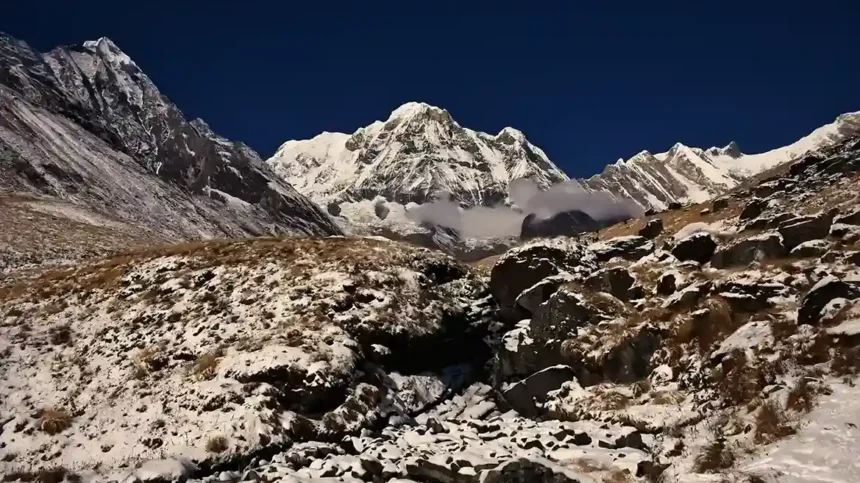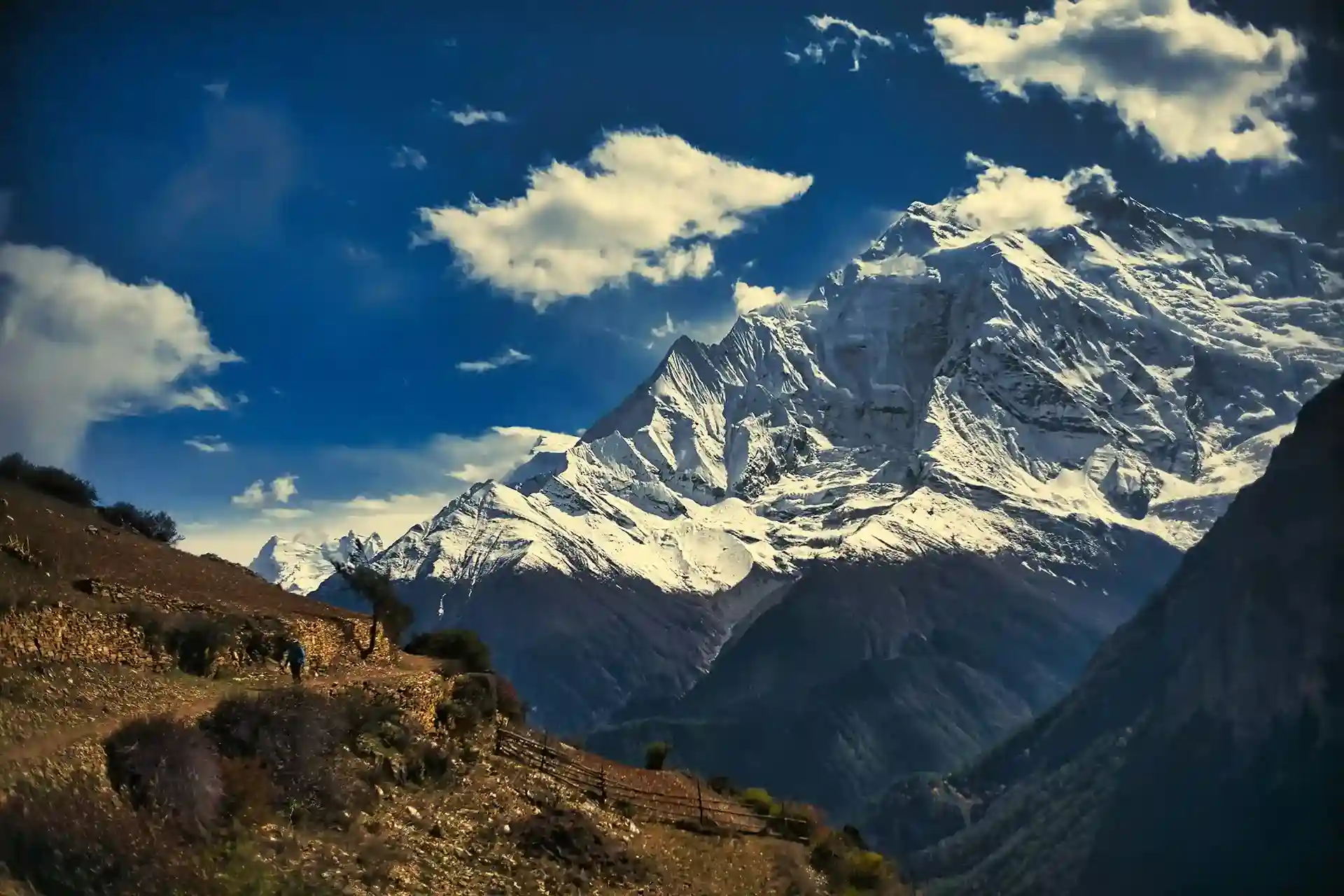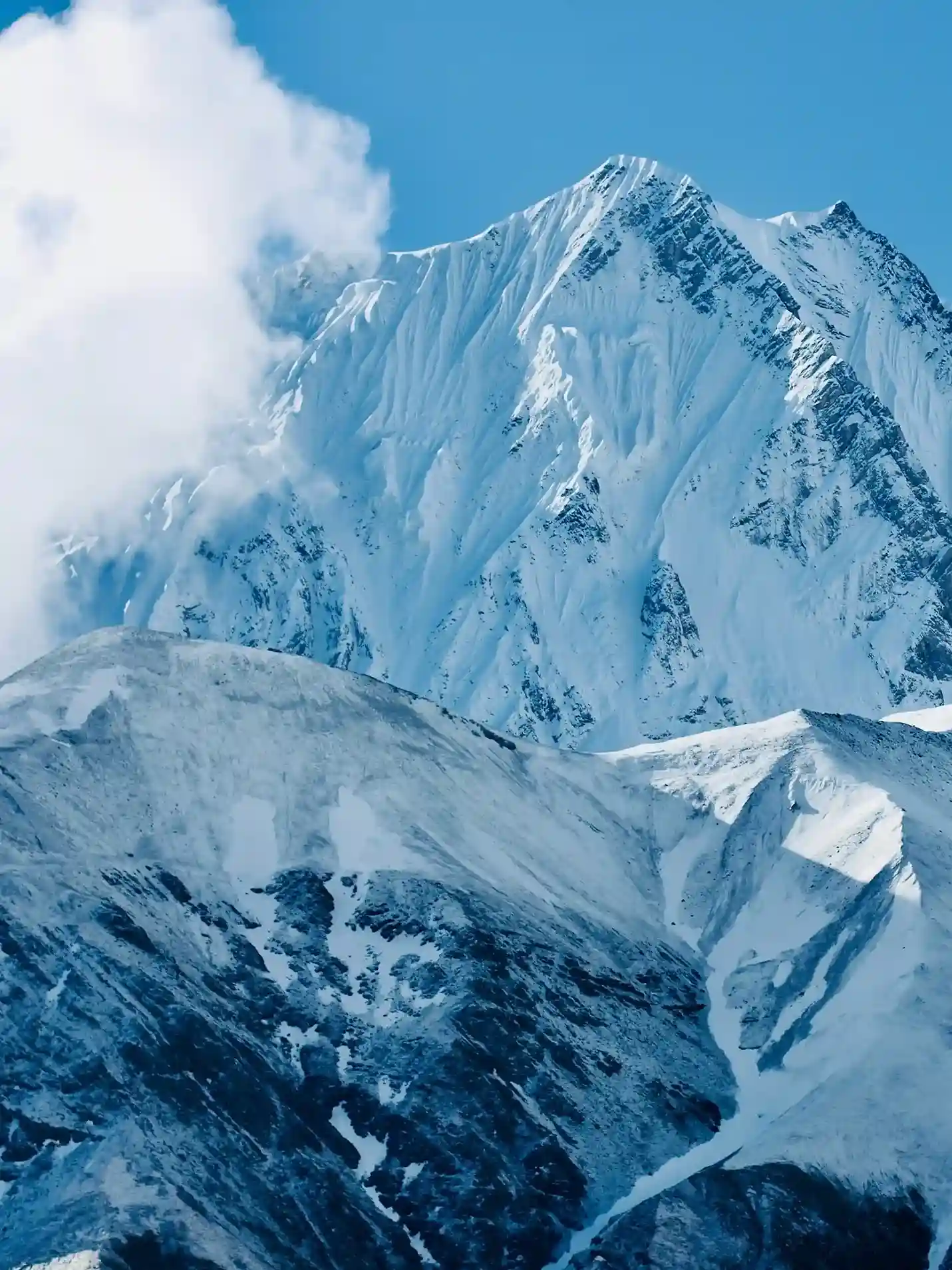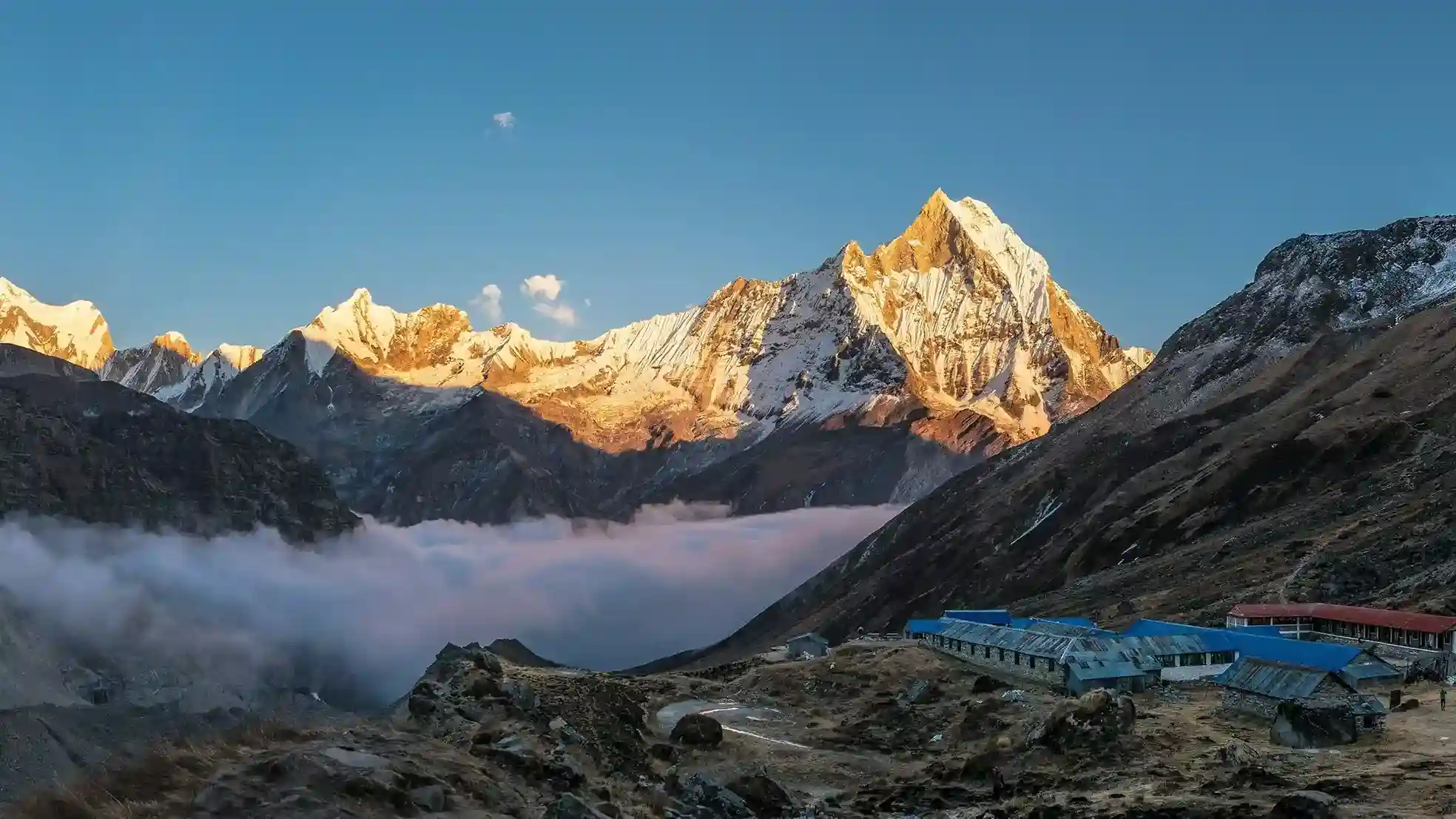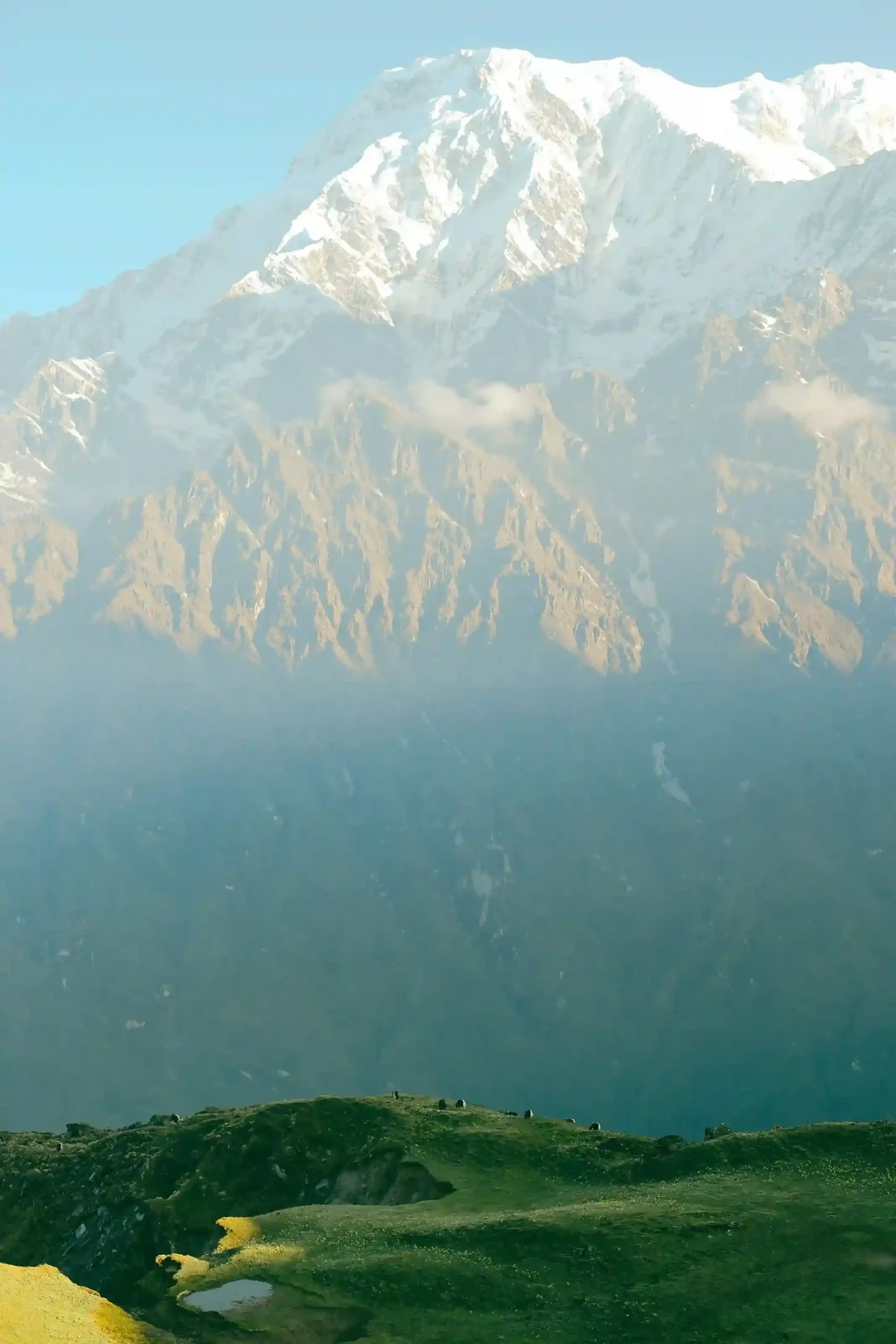Overview of the Annapurna Massif
The world’s most renowned mountain range, the Annapurna Massif, is a group of peaks. It is also referred to as the Annapurna Himal range. Especially, all of the Adventurers, trekkers, and mountaineers are drawn to this region since it is home to some of the highest and most difficult peaks on Earth. Hence, today in this blog, we’ll explore the geography, significance, and allure of the Annapurna Mountain range, highlighting why it continues to grab the attention of people from around the world.
Where is Annapurna massif?
The Annapurna Massif, also known as the Annapurna Mountain range or Annapurna Himal, is a series of peaks stretching about 55 kilometers (34 miles) in the Gandaki Province, north-central Nepal. This massif includes more than a dozen peaks over 7,000 meters (22,970 feet), with Annapurna I standing as the highest at 8,091 meters (26,545 feet).
The History of the Annapurna Massif
Many of the tallest mountains in the world are found in the Annapurna Himal Range, which is named after Annapurna, the goddess of harvests or “The Provider.” The Gurung people, who originated in Tibet live in this area now, as they first settled in the area in the sixth century.
Annapurna I (8,091m), the highest peak in the massif, was first by successfully climbed by Maurice Herzog and Louis Lachenal on June 3, 1950. Despite being the first of the “over 8000m” peaks to be reached, it is still regarded as one of the world’s most dangerous peaks for climbers.
Furthermore, the mountain’s summit is composed of limestone, signifying that it was most likely formed millions of years ago at the bottom of a warm ocean. This implies that the mountain is getting smaller over time as well!
Why is Annapurna Himal is Dangerous?
Many people believe that the two highest mountains in the world, K2 (8,611 meters) and Mt. Everest (8,848 meters), are the most challenging mountains to climb effectively when talking about mountain expeditions.
However, in actuality, the real scenario depicts a different picture. The death rate on Mount Everest is approximately 4.4%, while the death rate on the K2 journey is approximately 13.7%. On the 8,000-meter charts, however, Mt. Annapurna’s death rate greatly exceeds that of both of these top summits. The death ratio in the Mt. Annapurna expedition is 32%, which means there are 32 deaths on the slopes of the mountain per 100 successful summits.
Annapurna is considered one of the most dangerous mountains in the world due to its steep, challenging terrain and unpredictable weather. Avalanches, rockfalls, and sudden storms make climbing extremely hazardous. Hence, the technical difficulty of the ascent, combined with rapidly changing conditions, has earned Annapurna a reputation as a perilous peak.
Now that you have known that the Annapurna I is the well-known peak for having one of the worst death rates among all mountains, it is extremely risky to climb. However, even with such stats, it continues to draw climbers who want to reach these challenging summits despite the risks involved.
How many bodies are on Annapurna Himal?
Annapurna I, the highest peak in the Annapurna Massif, is known for being one of the deadliest mountains in the world. It has a very high fatality rate among those who attempt to summit it, with estimates suggesting that more than 70 climbers have lost their lives on the mountain. The exact number of bodies that remain on the mountain is difficult to determine, as recovery efforts are often dangerous and not always possible.
Many of those who have perished remain on the slopes, adding to the mountain’s deadly reputation. That’s why this eighth-highest snow peak in the world has been labeled as the ‘Deadliest Mountain to Climb’ by the Guinness World Records.
Is Annapurna Himal deadlier than Everest?
The tallest peak in the Annapurna Massif, Annapurna I, is renowned for being one of the world’s deadliest mountains. Estimates indicate that over 70 climbers have died on the peak, making it the mountain with the highest fatality rate among those who attempt to summit it. It is challenging to estimate the exact amount of bodies still on the mountain because recovery operations are frequently risky and not always practical.
As we mentioned above, although the number of climbers on Everest leads to a higher overall death toll, Annapurna I has a far higher death rate, making it statistically riskier to climb than Everest.
What is special about Annapurna Mountain Range?
The mix of Annapurna’s excellent surroundings, strenuous climbing routes, and rich climbing legacy makes it unique. Some of the most breathtaking mountain scenery on earth can be seen in the Annapurna Massif, which is home to several high peaks, including the mighty Annapurna I. In addition, the area is a hotspot for biodiversity, supporting a variety of ecosystems and threatened species.
Trekkers and climbers are drawn to Annapurna Himal not only for its Hardcore climbing adventures. With treks like the Annapurna Circuit trek and Annapurna Base Camp trek, Annapurna also provides an opportunity for normal people to experience the local cultures of the Gurung, Thakali, and Manangi people. Furthermore, the area’s spiritual significance, with sacred sites like Muktinath, adds a profound dimension to the adventure, making Annapurna a truly unique and captivating destination.
Annapurna I
Annapurna I, the highest peak in the Annapurna Massif, stands at 8,091 meters (26,545 feet) and is renowned for being one of the deadliest mountains in the world. As the first 8,000-meter peak ever climbed, it holds a special place in mountaineering history, but its notoriously high fatality rate makes it a hardcore challenge for climbers.
The mountain’s steep slopes, unpredictable weather, and frequent avalanches have claimed the lives of many who have attempted its ascent, adding a sense of both awe and fear to its already formidable reputation.
Annapurna II
Annapurna II is the second-highest peak in the Annapurna Massif, standing at 7,937 meters (26,040 feet). Located east of Annapurna I, it is known for its imposing presence and challenging climbing routes. Although slightly lower than Annapurna I, Annapurna II is still a formidable mountain, attracting experienced climbers with its steep faces and technical difficulties.
The first successful ascent was made in 1960 by a British/Indian/Nepalese team, and since then, it has remained a sought-after summit for mountaineers looking to tackle one of the lesser-climbed but equally impressive peaks of the Annapurna Himal range.
Annapurna III
Annapurna III is a prominent peak in the Annapurna Massif, standing at 7,555 meters (24,786 feet). Known for its dramatic and sharp ridges, it is one of the most visually striking mountains in the range. Annapurna III presents a challenging climb due to its steep, technical routes, making it a favorite among experienced mountaineers.
First successfully climbed in 1961 by an Indian expedition, the peak has since seen relatively few ascents compared to its more famous neighbors. As a result, it gains appeal as a challenging and remote goal for climbers. It is an important feature of the Annapurna Himal because of its closeness to Annapurna IV and Gangapurna, which enhances the magnificence of the surrounding area.
Annapurna IV
Annapurna IV, standing at 7,525 meters (24,688 feet), is a significant peak in the Annapurna Massif. It is located just east of Annapurna III. Known for its steep, icy slopes and challenging ridgelines, it offers a demanding climb that attracts only experienced mountaineers. The peak was first successfully ascended in 1955 by a German expedition, and its remote, rugged terrain continues to pose a great challenge.
Annapurna IV is a notable and impressive feature of the Annapurna Himalayas, adding to the breathtaking alpine landscape of the area due to its close proximity to other important peaks in the range including Annapurna II and Gangapurna.
Climate
The best seasons to fo see the Annapurna Massif are spring (March-May) or fall (October–November) when there are moderate temperatures, little precipitation, and excellent mountain views, similar to most other parts of Nepal.
Autumn is a popular time to visit since it follows the monsoon season and features bright green hillsides, rhododendron flowers in bloom, and an enthusiastic, new atmosphere on the trails. It also indicates that it’s popular, so plan to talk about your experience with others who share your interests and reserve your accommodation early. Alternatively, you can leave it to the professionals like us and select an all-inclusive guided trip.
Cultural and Geographical Significance of the Annapurna Mountain Range
In addition to being a natural wonder, the Annapurna Mountain range is home to a rich cultural legacy. As we have already mentioned in an earlier section, numerous ethnic groups, such as the Gurung, Thakali, and Manangi people, live in the region surrounding the massif, and their distinctive cultures and traditions add to the trekking experience.
Trekkers will undoubtedly get to experience both the natural beauty and the cultural diversity of the Annapurna Himalayas by taking an adventure through this region on well-known trekking routes like the Annapurna Circuit and the Annapurna Base Camp (ABC) journey.
Biodiversity in the Annapurna Himalayas
Because of its extensive range of flora and wildlife, the Annapurna Himalayas are considered a hotspot for biodiversity. This area is a component of the Annapurna Conservation Area, which covers 7,629 square kilometers (2,946 square miles), making it the largest conservation area in Nepal.
The varied habitats, which are home to many bird species, snow leopards, red pandas, and alpine meadows as well as rocky high-altitude zones, span from subtropical woods to these areas. Because of its biodiversity, the Annapurna Massif is a popular travel destination for people who value environmental preservation and scenic views in addition to thrill seekers.
Popular Treks in the Annapurna Mountain Range
There are numerous well-liked trekking routes on the way to the Annapurna Mountain range, and each one offers differing experiences and beautiful views. Here a couple of them-
Annapurna Circuit Trek
The Annapurna Circuit is one of the most famous trekking routes in the world, circling the entire Annapurna Massif. This trek covers a distance of 160 to 230 kilometers (100 to 145 miles) and takes about 15 to 20 days to complete. Highlights of the trek include crossing the highly elevated Thorong La Pass at 5,416 meters (17,769 feet) and exploring the Kali Gandaki Gorge, the world’s deepest gorge.
Annapurna Base Camp (ABC) Trek
The Annapurna Base Camp Trek, also known as the Annapurna Sanctuary Trek, is a shorter route that leads trekkers into the heart of the Annapurna Massif. This trek typically takes 7 to 12 days and offers close-up views of Annapurna I and other surrounding peaks. The ABC Trek is known for its diverse landscapes, from subtropical forests to high-altitude alpine meadows, making it a favorite among trekkers.
Other Treks in the Annapurna Himalayas
In addition to the Annapurna Circuit and ABC Trek, the region offers other rewarding trekking routes. The Ghorepani Poon Hill Trek, for example, is a shorter trek known for its stunning sunrise views over the Annapurna and Dhaulagiri ranges.
Furthermore, the Mardi Himal Trek provides a quieter, less crowded experience with spectacular views of the Annapurna Massif and Machapuchare. For a more remote adventure, the Nar Phu Valley Trek offers a glimpse into ancient Tibetan culture in an isolated and dramatic landscape.
Birendra Duwadi by profession a trekking and tourist guide and an enterpreur whose passion is trekking in the himalayas. Started Mission Himalaya Treks in 2015 with a new vision to introduce Nepal's Himlayas to the world. His vision is to explore and documentation new trekking routes . Birendra leads Mission Himalaya, a company that change the qualities of trekking in Nepal.

